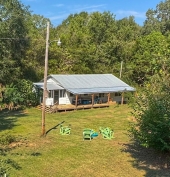Hey Elle, I know you are in a difficult climate with little water; have you tried or ruled out attempting to grow Jerusalem artichokes (sunroots as Joseph calls them)? Where I am, they seem quite drought tolerant, but I have failed at growing them if I do not offer a tiny bit of irrigation after 4-6 weeks of summer heat with no rain. (We do have wild/native ones here that survive that same drought, but they have small roots.)
The reason I am asking is that I just now stumbled across for the second time
this 170 year old article on -- among other sunroot topics -- growing Jerusalem Artichokes for hog feed. The author, in a North Carolina (so warmer and wetter) context, considers them particularly useful for supporting hogs in winter. In a Wyoming context, if they would grow at all, they'd require a more effortful scheme than the NC "just turn the hogs into that field in the winter" method. But if they would grow there, it might be worth doing? I know nothing of hogs and little about your situation, so, possibly this is category "interesting but useless":
In England and other parts of Europe, the tubers have been considered quite a delicacy for man, and without doubt they make the most beautiful pickle. But their chief importance, in this respect, is their use in feeding hogs. From the middle of October to the middle of November, the hogs may be turned on the artichokes, and with salt always in troughs to which they can have access, they will grow and thrive till next spring, particularly, if the ground is not too hard for rooting. I have not experimented to ascertain the quantity of hogs to the acre of good artichokes; but from the observation of two seasons, I am of the opinion twenty head will do well on an acre for months. As some have complained their hogs would not root after them, it may be necessary, as hogs, like men, know not much before learning, that they be taught to root after them. This is clone, by calling the hogs after a plough that will throw out the roots, till the grunters learn their habitation, which will require but a very short time.









